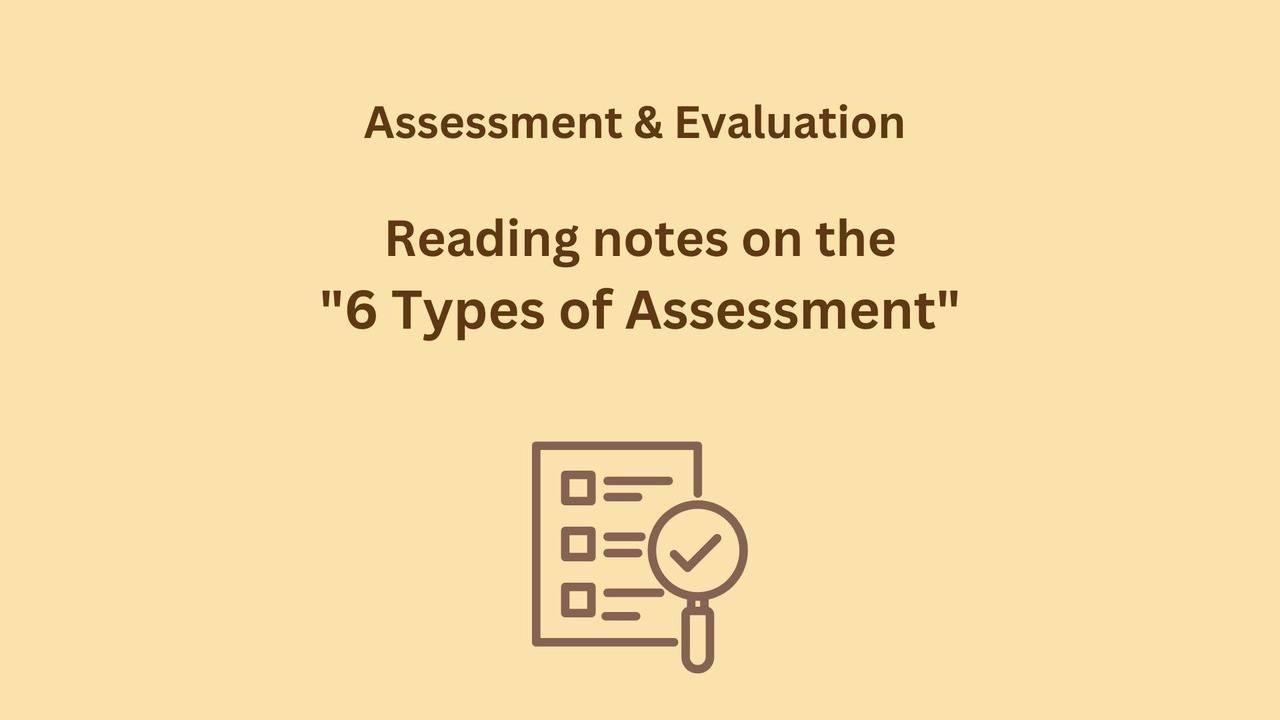After reading this article 6 Types of Assessment (and How to Use Them)--the link goes to a website outside GJW
I find the content to be very informative, especially for new teachers and those who are not very familiar with the North American education context, so here's a brief summary of this article:
1 The 6 types of assessments are:
- Diagnostic assessments
- Formative assessments - help teachers understand student learning while they teach, and provide them with information to adjust their teaching strategies accordingly.
- Summative assessments - measure student progress as an assessment of learning. Standardized tests are a type of summative assessment and provide data for you, school leaders, and district leaders. They can assist with communicating student progress, but they don’t always give clear feedback on the learning process and can foster a “teach to the test” mindset if you’re not careful.
- Ipsative assessments - are one of the types of assessment as learning that compares previous results with a second try, motivating students to set goals and improve their skills.
- Norm-referenced assessments - are tests designed to compare an individual to a group of their peers, usually based on national standards and occasionally adjusted for age, ethnicity or other demographics. Unlike ipsative assessments, where the student is only competing against themselves, norm-referenced assessments draw from a wide range of data points to make conclusions about student achievement
- Criterion-referenced assessments - compare the score of an individual student to a learning standard and performance level, independent of other students around them. In the classroom, this means measuring student performance against grade-level standards and can include end-of-unit or final tests to assess student understanding; Outside of the classroom, criterion-referenced assessments appear in professional licensing exams, high school exit exams and citizenship tests, where the student must answer a certain percentage of questions correctly to pass.
2 In a classroom, assessments generally have one of three purposes:
- Assessment of learning-- usually grade-based, and often have a concrete grade attached to them that communicates student achievement to teachers, parents, students, school-level administrators and district leaders. Common types are: Summative/Norm-referenced/Criterion-referenced assessments
- Assessment for learning-- should always be ongoing and actionable.
- Assessment as learning-- actively involves students in the learning process. It teaches critical thinking skills, problem-solving and encourages students to set achievable goals for themselves and objectively measure their progress
The above are mostly copied from the article in a more concise structure, if you have the time, I would really like to recommend exploring this article & the website for more details and examples , and hopefully this could be a clear intro for one of the main sections in our daily teaching - assessment and evaluation
PS1.
Summative Assessment Definition: any evaluation method performed at the end of a unit that allows a teacher to measure a student's understanding, typically against standardized criteria. The purpose of summative assessment is to gauge students' comprehension of the material presented at the end of a particular unit of work and is often measured with a grade or percentage, depending on the subject. Summative assessments require clear expectations and timelines to be set to give students the best opportunity to succeed. Teachers use rubrics, or assessment criteria, to ensure students understand what to expect in any such test. The results of summative assessments are usually significant, and used to determine whether a student passes a unit or even a class.
Examples of summative assessments may include: Written Assessment; Performance Assessment; Standardized Assessment; Oral Assessment
Formative vs. Summative Assessment: The primary difference between formative and summative assessments is that summative assessment is given upon completion of a unit and is ongoing. The goal of formative assessment is to help teachers determine any gaps in student knowledge and areas where they can improve, allowing teachers to alter their lesson planning accordingly. summative assessments are often graded material, while formative assessments can range from student or peer assessment to teacher assessment or general observation.



Leave a Comment